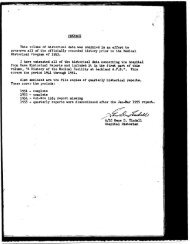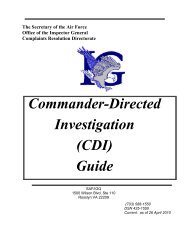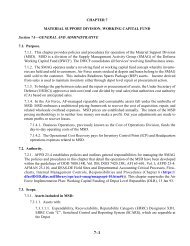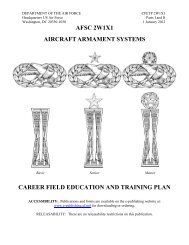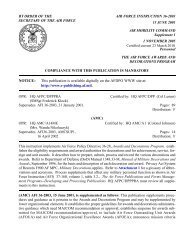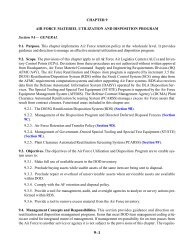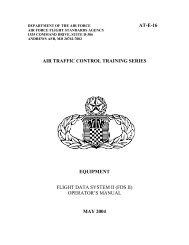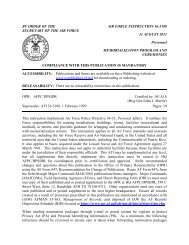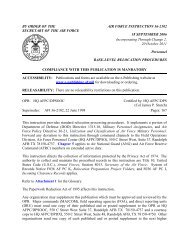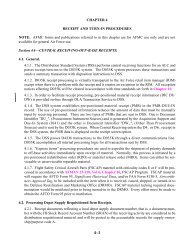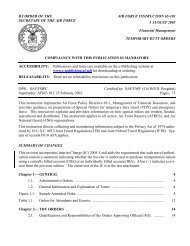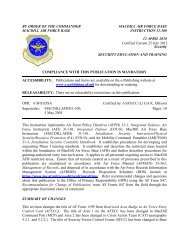Energy Panel Colonel Ron Torgerson, USAF Ret. Dr ... - Air Force Link
Energy Panel Colonel Ron Torgerson, USAF Ret. Dr ... - Air Force Link
Energy Panel Colonel Ron Torgerson, USAF Ret. Dr ... - Air Force Link
Create successful ePaper yourself
Turn your PDF publications into a flip-book with our unique Google optimized e-Paper software.
<strong>Energy</strong> <strong>Panel</strong> - AFA - 9/17/12<br />
We’re hoping there are other [inaudible] opportunities to partner<br />
with industry. [Inaudible] take a risk which is ultimately<br />
[inaudible] and private sector risk.<br />
So I believe, what has happened since 2007, [inaudible]<br />
scores, we talk to the leadership of the House and the Senate,<br />
[inaudible] by the wayside because that’s ultimately another<br />
[inaudible] priority that we would have to sacrifice in order to<br />
pay for that. That’s really where we’re at right now.<br />
Again, [inaudible] focuses on is partnering with the private<br />
sector where there’s predominantly, where the first look is<br />
private sector financing versus continued government [inaudible].<br />
Question: <strong>Dr</strong>. Geiss, and then <strong>Colonel</strong> Fryer.<br />
<strong>Dr</strong>. Geiss, you mentioned a goal for our current trajectory<br />
of 16 percent meeting your energy goals. Are you going to be able<br />
to continue that towards 2025? What kind of projects [inaudible]<br />
make that happen?<br />
<strong>Colonel</strong> Fryer mentioned a little bit about being an offtaker<br />
of some of the [DBA, DBB] energy, renewable sources. I<br />
heard in the past that the <strong>Air</strong> <strong>Force</strong> was not going to be an<br />
energy off-taker. Is that something that’s changed or is that<br />
just something that the Army’s doing differently than the <strong>Air</strong><br />
<strong>Force</strong>?<br />
<strong>Dr</strong>. Geiss: As far as the [inaudible] goal, we believe that<br />
the combination of both direct investment, part of that $250<br />
million a year that we’ve [inaudible] focused on, as well as the<br />
ESPCs will keep us on the trajectory to meet the energy<br />
[inaudible].<br />
Right now looking at our track record, intensity is just one<br />
part of the situation. What we look at also is zero cost. We<br />
have brought down our cost of utilities about 35 percent over the<br />
last decade or so. So we have, although tracking the intensity<br />
[inaudible]. Like I said, this year we calculated that we saved<br />
the <strong>Air</strong> <strong>Force</strong> $500 million. Although we’re tracking the<br />
intensity [inaudible] dollars also.<br />
We think that the expansion of our ESPC program over the<br />
next few years will help us to get there, even if we don’t have<br />
dollars in the investment [inaudible].<br />
Question: [Inaudible] the United States <strong>Air</strong> <strong>Force</strong> is<br />
[inaudible].<br />
- 15 -




